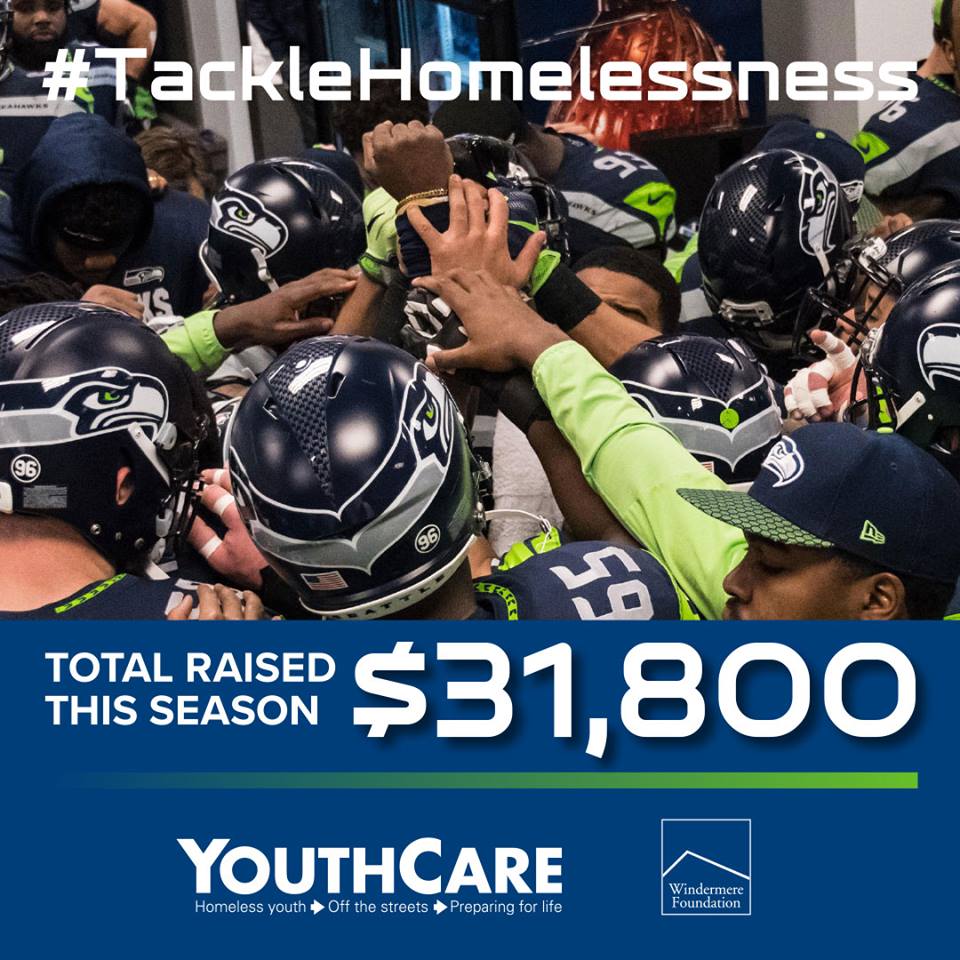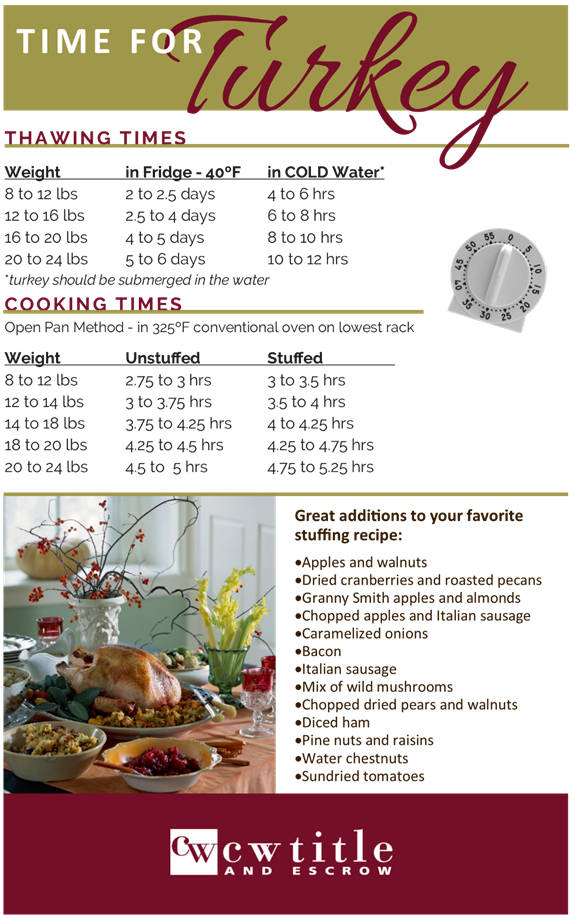Seahawks Defensive Tackles Raise $31,800 in 2017 for the #TackleHomelessness Campaign

During last year’s #tacklehomelessness campaign, the Seattle Seahawks helped us raise $35,000 for YouthCare which provides critical services to homeless youth. This year our Seahawks defense had 318 home game tackles, helping us raise an additional $31,800. That’s a grand total of $66,800! Thank you Seahawks for partnering with us to help #tacklehomelessness! #WeAreWindermere
What Can We Expect From The 2018 Housing Market?

By Matthew Gardner, Chief Economist, Windermere Real Estate

It’s the time of the year when I look deep into my crystal ball to see what’s on the horizon for the upcoming year. As we are all aware, 2017 has been a stellar year for housing across the country, but can we expect that to continue in 2018?
Here are my thoughts:
Millennial Home Buyers
Last year, I predicted that the big story for 2017 would be millennial home buyers and it appears I was a little too bullish. To date, first-time buyers have made up 34% of all home purchases this year – still below the 40% that is expected in a normalized market. Although they are buying, it is not across all regions of the country, but rather in less expensive markets such as North Dakota, Ohio, and Maryland.
For the coming year, I believe the number of millennial buyers will expand further and be one of the biggest influencers in the U.S. housing market. I also believe that they will begin buying in more expensive markets. That’s because millennials are getting older and further into their careers, enabling them to save more money and raise their credit profiles.
Existing Home Sales
As far as existing home sales are concerned, in 2018 we should expect a reasonable increase of 3.7% – or 5.62 million housing units. In many areas, demand will continue to exceed supply, but a slight increase in inventory will help take some heat off the market. Because of this, home prices are likely to rise but by a more modest 4.4%.
New Home Sales
New home sales in 2018 should rise by around 8% to 655,000 units, with prices increasing by 4.1%. While housing starts – and therefore sales – will rise next year, they will still remain well below the long-term average due to escalating land, labor, materials, and regulatory costs. I do hold out hope that home builders will be able to help meet the high demand we’re expecting from first-time buyers, but in many markets it’s very difficult for them to do so due to rising construction costs.
Interest Rates
Interest rates continue to baffle forecasters. The anticipated rise that many of us have been predicting for several years has yet to materialize. As it stands right now, my forecast for 2018 is for interest rates to rise modestly to an average of 4.4% for a conventional 30-year fixed-rate mortgage – still remarkably low when compared to historic averages.
Tax Reform
Something that has the potential to have a major impact on housing are the current proposals relative to tax reform. As I write this, we know that both the House and Senate propose doubling the standard deduction, and the House plans to lower the mortgage interest deduction from $1,000,000 to $500,000. If passed, the mortgage deduction would no longer have value for home owners who would likely opt to take the standard deduction.
If either of the current proposals is adopted into law, the potential reduction in mortgage-related tax savings means the after-tax cost of home ownership will increase for most home owners. Additionally, both the House and Senate bills also end tax benefits for interest on second homes, and this could have a devastating effect in areas with higher concentrations of second homes.
The capping of the deduction for state and local property taxes (SALT) at $10,000 will also negatively impact states with high property taxes, such as California, Connecticut, and New York. Furthermore, proposed changes to the capital gains exemption on profits from the sale of a home (requiring five years of continuous residence as compared to the current two) could impact approximately 750,000 home sellers a year and slow the growth of home ownership.
Something else to consider is that all of the aforementioned changes will only affect new home purchases, which I fear might become a deterrent for current home owners to sell. Given the severe shortage of homes for sale in a number of markets across the country, this could serve to exacerbate an already-persistent problem.
Housing Bubble
I continue to be concerned about housing affordability. Home prices have been rising across much of the country at unsustainable rates, and although I still contend that we are not in “bubble” territory, it does represent a substantial impediment to the long-term health of the housing market. But if home price growth begins to taper, as I predict it will in 2018, that should provide some relief in many markets where there are concerns about a housing bubble.
In summary, along with slowing home price growth, there should be a modest improvement in the number of homes for sale in 2018, and the total home sales will be higher than 2017. First-time buyers will continue to play a substantial role in the nation’s housing market, but their influence may be limited depending on where the government lands on tax reform.
Windermere Foundation Quarterly Report | Q3 2017

|
|||
|
|||
|
The Gardner Report | Q3 2017

|
|||||||||||||||||||
|
|||||||||||||||||||
|
|||||||||||||||||||
|
|||||||||||||||||||
|
Why You Shouldn’t Make a Big Down Payment on Your First Home
For decades, it was one of the few hard-and-fast rules when purchasing a home: Put 20% down. A hefty down payment would help you build up equity faster, and make sure your mortgage was affordable.
Times change. A new study from the National Association of Realtors underscores the fact that the 20% mark is far more myth than reality. Over the past three years, the median down paymentfor a first time homebuyer has been just 6%. It’s higher for those buying their second or third home—the average repeat homebuyer now puts 14% down. But that’s still a dramatic drop from an average of 23% back in 1989. And, in fact, when asked what would be considered a fair down payment, 70% of respondents to an NAR survey said 10%.
But for households in good financial shape, paying less than 20% is not nearly as worrisome as one might think. In fact, it can free up funds for retirement savings and other important goals in ways that can make you look smart down the road.
For starters, the fact that interest rates remain historically very cheap mean that the costs of carrying a bigger mortgage aren’t as painful as they might have been in a different era.
Of course, a smaller down payment means that you have to pay private mortgage insurance (PMI) until you work your way up to having 20% equity. PMI can run 0.5% to 1% of the entire cost of the loan—and in one sense, that can cost you some opportunities. Take a $300,000 home that has a 30-year fixed mortgage of 4% on a loan of $270,000. If you put 10% down, you’ll owe approximately $121 a month in PMI insurance. If you were putting that money in a low-cost index fund instead, you would have over $14,000 in a retirement account after seven years, assuming historical returns.
On the other hand, you could weigh that against the opportunity – and reduction of money related stress – that come with a lower down payment. Say you saved $60,000 for a $300,000 home purchase, but opted to put only 10% down, or $30,000. Now you have $30,000 sitting comfortably in your savings account. According to the NAR, buyers of a brand new home spend $10,601 on appliances, furnishings or repairs in the first year after purchase. Buyers of existing homes spend $8,233 in that first year. You could spend that money, and still have around $20,000 to park immediately in your retirement savings.
You could also put that $20,000 extra into a bathroom remodel or a kitchen repair, either of which could help you build equity in your home if it raised your home’s overall value. That could enable you to wipe the PMI off your mortgage bill more quickly—and, eventually, you’ll have more cash flow to feed into that nest egg.
Ryan Derousseau, Fortune.com, 9/20/17
 Facebook
Facebook
 X
X
 Pinterest
Pinterest
 Copy Link
Copy Link














 One organization that has been the recipient of Windermere Foundation funds is
One organization that has been the recipient of Windermere Foundation funds is 







